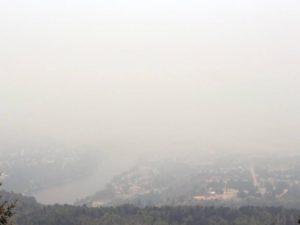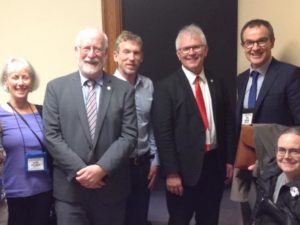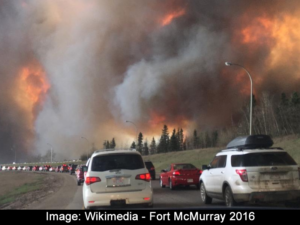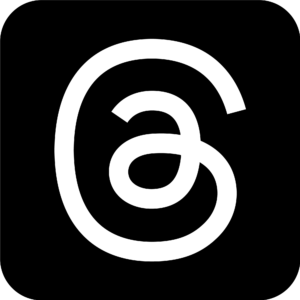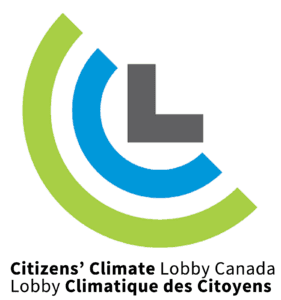The province of British Columbia (BC) enacted a revenue-neutral carbon tax in 2008 (1). It has been touted as “the most significant carbon tax in the Western hemisphere” (2). Consequently, much ado about the BC Carbon Tax has been made by CCLers over the years. BC’s Carbon Tax and Carbon Fee and Dividend are similar in that they are both revenue neutral carbon taxes. Here are four key differences that should be noted: (I) Where carbon is priced: (II) Carbon price increases over time: (III) Exemptions, incentives and border tax adjustments: (IV) Revenue recycling: Please note that to help with public education during the BC Climate Leadership Consultations in early 2016, CCL BC and the CCL National Office in Canada collaborated to make this cartoon panel describing why BC should hike their tax. (2) British Columbia’s Carbon Tax: By the numbers, (2015). Carbon Tax Centre (3) Baily, I., 2013. B.C.’s Clark vows to freeze carbon tax for five years, The Globe and Mail, April 3, 2013. http://www.theglobeandmail.com/news/british-columbia/bcs-clark-vows-to-freeze-carbon-tax-for-five-years/article10728482 (4) British Columbia Ministry of Finance, 2014. Budget and fiscal plan 2014/15 – 2016/17, February 18, 2014, p. 64. http://bcbudget.gov.bc.ca/2014/bfp/2014_Budget_Fiscal_Plan.pdf (5) Can the Swiss show B.C. how to use carbon tax revenue? Silvia Tzenkova, August 2015 The BC Carbon Tax vs CCL’s Carbon Fee and Dividend
Carbon Fee and Dividend: carbon is priced upstream at the well head, mine or port of entry.
BC Carbon Tax: carbon is priced downstream when a fossil fuel is purchased such as at a gasoline pump.
Carbon Fee and Dividend: will increase incrementally from $15 tonne/ CO2 going up $10 tonne/ CO2 / year until Canada’s total CO2 emissions have declined to 10% of the level of Canada’s CO2 emissions for calendar year 1990.
BC Carbon Tax: increased incrementally over 5 years (2008-2012), from $10/tonne CO2 in 2008 to $30/tonne in 2012. The Liberal government in BC was re-elected under Premier Christy Clark in 2013, on a campaign promise that they would freeze the carbon tax for at least 5 years [4].
Carbon Fee and Dividend: there are no exemptions. Governments, businesses, corporations and individuals all pay the carbon fee when they consume fossil fuels directly or indirectly. There is no need for exemptions because carbon fee and dividend will be integrated nationally, setting a base national carbon price and thus, businesses will be protected from competition with border tax adjustments on imports from jurisdictions without equivalent carbon pricing.
BC Carbon Tax:of note fossil fuels purchased for agriculture (starting in 2013) is exempt from the BC carbon tax. The cement industry was given $3 million dollar incentive in 2015. These exemptions and incentives are meant to protect the industries from competition outside of BC because subnational governments cannot enact border tax adjustments to protect carbon intensive industries.
Carbon Fee and Dividend: 100% of the fees collected (minus administrative costs) shall be distributed as equal monthlyper-person dividend payments via cheques to be made to all Canadians (1/2 per child under 18 years old, with a limit of 2 children per family).
BC Carbon Tax: In the 2012-2013 fiscal year 73% of BC’s carbon tax went towards reducing corporate and small business taxes. Another 21% went toward reducing personal income taxes, and 17% went toward low income tax credits . Yes, the numbers don’t add up because more money was returned in tax deductions than was collected in carbon tax revenue (4). Revenue from the BC carbon tax has also been used to give subsidies to the film industry, amongst other things, putting into question its claim of revenue neutrality (5).
(1)“Carbon Tax Act” 2008 Legislative Session: 4th Session, 38th Parliament.
Last accessed 04-01-2016
http://www.vancouversun.com/opinion/op-ed/opinion+swiss+show+carbon+revenue/11332978/story.html
LASER TALK: BC Carbon Tax vs Carbon Fee and Dividend
Home » CCL Canada News » LASER TALK: BC Carbon Tax vs Carbon Fee and Dividend



